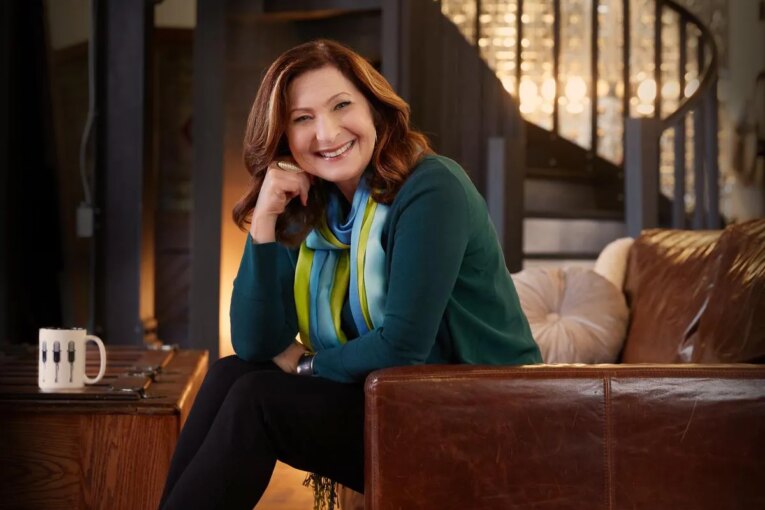
[ad_1]
VANCOUVER — A comb came in the mail for Sophie Lui one day. There was no note and no return address.
It was early in Lui’s TV news career and she had been sporting a short, spiked haircut at her station in Victoria.
She presumes someone didn’t like it.
“I don’t remember being particularly hurt by it,” Lui says, “but obviously I remember that incident all these years later.”
Lui, now the Global News Hour at 6 co-anchor on Global BC, has certainly experienced worse during her career.
Once, a racist tirade about her being Asian was left on the station’s answering machine. Tweets sometimes warn her of her impending execution. Alongside the hateful or threatening comments over the years, has also been a steady stream of remarks about her appearance.
Women in Canada’s broadcasting industry have long faced pressures regarding their appearance that their male counterparts do not.
The issue, always simmering in the country’s newsrooms, burst into prime time last week when Lisa LaFlamme, the anchor of Canada’s top-rated national news program, revealed on Twitter that she had been relieved of her position.
CTV announced it would be replacing LaFlamme with national affairs correspondent Omar Sachedina, a younger man. CTV’s parent company, Bell Media, has been in a public relations battle ever since.
Accusations of sexism, ageism, bullying and a steady stream of CTV staffers speaking to their journalism competitors with their names withheld about a culture of toxicity within the company have the network making headlines of its own. Friday morning, Bell Media announced a review of its CTV news workplace.
The company has insisted LaFlamme’s ouster was a business decision and internal memos obtained by the Star reveal it has been telling its employees that ageism and sexism are “false narratives” that have developed.
But this week, the Globe and Mail reported the company’s head of news, Michael Melling, once questioned who had allowed LaFlamme, 58, to let her hair go grey.
Concern over greying hair is familiar to Lui, who recently turned 48.
She said she once asked a boss (who is no longer with the station), in a casual conversation, whether she should just let her hair go grey instead of dyeing it.
The answer was a flat “no.”
It comes from more than one place. The public often feels like it, too, can tell women on TV how to look.
In one instance, a woman emailed Lui accusing her of not washing her hair, then argued when Lui responded she had. Then there was the upheaval about women wearing sleeveless tops on the news.
When she was a morning show host, one viewer used to regularly leave comments on the show’s Facebook page saying Lui was awful at her job because she wasn’t a mother.
“Most of the comments I remember are the negative ones, so the ones that have stuck with me for years tend to be the negative ones, which is pretty sad,” she said. “So, even if I am able to brush them off, I still remember a lot of them.”
Despite largely not letting it bother her, Lui does notice how her hair looks on TV, how her skin is aging and said she thinks about her clothes too much, an extra headache because she hates shopping.
The problem is industry-wide, female journalists told the Star, some anonymously due to fear of repercussions for speaking publicly.
One reporter said she has constant worries.
“Make sure your face isn’t shiny; don’t wear those distracting earrings again; you should wear necklines that don’t look boxy. These are all things I’ve literally heard and still think about each day before I go on air,” she said via direct message.
Being concerned daily about her appearance has made her self-conscious, she said, often worrying when she meets people outside of work that they may remark about how much better she looks on TV.
One former CTV employee told the Star about an instance, before current news boss Michael Melling took over, when a female reporter was told not to wear button-up shirts, unlike male colleagues, because they were not considered “feminine enough.”
It’s certainly nothing new. The issue goes back to the dawn of women in broadcasting, says Anna Maria Tremonti.
Tremonti is perhaps best known for her years of hosting The Current on CBC Radio, but prior to that she worked in television. She had thought perhaps the worst traits of broadcasting for women were behind the industry. Now she’s not so sure.
“When this happened to Lisa LaFlamme, it’s like, ‘Whoa, don’t get too ahead of yourself that so much has changed for women who get older on air,’” she said.
Tremonti worked in the industry when fewer women were present in newsrooms, she said. At the time, she noticed women, even those with power and influence, seemed to drop out after turning 50.
It was also commonplace for the looks of female reporters to be a topic of discussion.
“The idea of what a woman looks like on television is still something that people, including bosses, think they can weigh in on,” Tremonti said. “That has been a problem since day one.”
Many aspects of the workplace for women have changed with time, according to Lynda Steele, a former news anchor in Edmonton for Global and reporter for CTV in Vancouver.
Steele is preparing for the launch of a new talk show alongside co-host Jody Vance on Victoria’s Chek TV next month.
She said, while wages and working conditions have certainly improved for women in television, the pressure on how women look is still overwhelming.
“Guys generally can buy a black suit, a grey suit and a navy suit and just rotate them for a year and no one would say diddly squat,” Steele said. “Whereas managers and viewers feel quite happy to chime in when they think that an (woman’s) outfit is ‘inappropriate;’ ‘too young;’ ‘you look fat in that;’ ‘it’s too dressy.’”
It was usually other women who are the most fierce critics, she said, adding it’s part of a larger pressure in the industry for women to be … more.
They must be gorgeous, young, intelligent and good at their job, Steele said.
They must be “everything.”
Most women develop a thick skin to get through it, she said, but the problems persist.
“I was never hired to be a model,” Steele said. “I was not hired because of my looks. I was hired because I was a journalist and a good communicator.”
Karin Nazish of the Coalition for Women in Journalism says the public may be surprised when the stories of the trials women in broadcast face bubble to the surface, but women in the industry are certainly not.
Often women in journalism are talking about their realities with each other in DMs or in other private channels due to fears of what happens if they speak out. Recently, the threatening and online trolling of female journalists has increased, she said, and support from some newsrooms has been lacking.
“I think women journalists, especially younger ones who are new to the industry or mid-career, they are feeling like there isn’t any structure,” she said. “I think that’s what women need in newsrooms is structure that accommodates the gender aspect of their work and their ability to work safely.”
Newsrooms taking a stand for their reporters would help stop misogynist attacks from the public, she said; when an organization stays silent when a woman is targeted, it only emboldens the aggressors.
Meanwhile, while women await such changes to occur, the loss of LaFlamme has been lamented.
Lui said though there’s no quick and easy solution because its part of a societal problem, but calling out those who critique women for their looks is one avenue. LaFlamme letting her hair turn grey was a good first step, she said.
In a landscape of women undergoing extreme pressure, the professionalism and poise LaFlamme brought into Canadians’ living rooms each night gave Lui hope as she looked down the road in her own career.
“There was a time when I didn’t think that I would be able to last on air past a certain age; I don’t know if I really had that age in my head, but when I saw Lisa aging as beautifully as she did, that gave me hope,” she said.
“Whatever the real story is behind her departure, the optics of losing someone of that stature who did make a decision to age gracefully on TV and to be a powerful and strong woman. … It’s hard to lose that.”
[ad_2]
You can read more of the news on source



